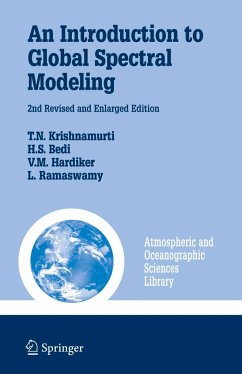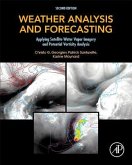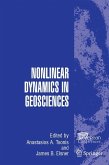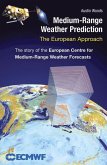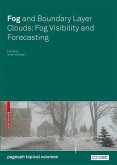This introductory book on numerical weather prediction focuses on the spectral transform method, which is an important component for global weather forecasts at numerous operational centers. Therefore, it is an indispensable guide to the methods being used by nearly all major weather forecast centers in the United States, England, Japan, India, France, and Australia. The objectives of this book are to provide a systematic and sequential background for students, researchers, and operational weather forecasters in order to develop comprehensive weather forecast models. The chapter exercises allow it to be used as a graduate textbook for courses in meteorology as well.
This is an introductory textbook on global spectral modeling designed for senior-level undergraduates and possibly for first-year graduate students. This text starts with an introduction to elementary finite-difference methods and moves on towards the gradual description of sophisticated dynamical and physical models in spherical coordinates. Computational aspects of the spectral transform method, the planetary boundary layer physics, the physics of precipitation processes in large-scale models, the radiative transfer including effects of diagnostic clouds and diurnal cycle, the surface energy balance over land and ocean, and the treatment of mountains are some issues that are addressed. The topic of model initialization includes the treatment of normal modes and physical processes. A concluding chapter covers the spectral energetics as a diagnostic tool for model evaluation. This revised second edition of the text also includes three additional chapters. Chapter 11 deals with the formulation of a regional spectral model for mesoscale modeling which uses a double Fourier expansion of data and model equations for its transform. Chapter 12 deals with ensemble modeling. This is a new and important area for numerical weather and climate prediction. Finally, yet another new area that has to do with adaptive observational strategies is included as Chapter 13. It foretells where data deficiencies may reside in model from an exploratory ensemble run of experiments and the spread of such forecasts.
This is an introductory textbook on global spectral modeling designed for senior-level undergraduates and possibly for first-year graduate students. This text starts with an introduction to elementary finite-difference methods and moves on towards the gradual description of sophisticated dynamical and physical models in spherical coordinates. Computational aspects of the spectral transform method, the planetary boundary layer physics, the physics of precipitation processes in large-scale models, the radiative transfer including effects of diagnostic clouds and diurnal cycle, the surface energy balance over land and ocean, and the treatment of mountains are some issues that are addressed. The topic of model initialization includes the treatment of normal modes and physical processes. A concluding chapter covers the spectral energetics as a diagnostic tool for model evaluation. This revised second edition of the text also includes three additional chapters. Chapter 11 deals with the formulation of a regional spectral model for mesoscale modeling which uses a double Fourier expansion of data and model equations for its transform. Chapter 12 deals with ensemble modeling. This is a new and important area for numerical weather and climate prediction. Finally, yet another new area that has to do with adaptive observational strategies is included as Chapter 13. It foretells where data deficiencies may reside in model from an exploratory ensemble run of experiments and the spread of such forecasts.
James Russell Carr in Mathematical Geology, Vol. 31, No. 8, 1999 on the book's first edition: In summary, the mathematical treatment is quite intense and demands patience of readers, at least in the case of this one. But if at all intrigued by how sophisticated weather forecasting has become (certainly strom forecasting) then a reader will find this book not only interesting, but thorough enough to enable model development if that is a goal. Problems are presneted at the end of each chapter, so this book can be used as a texct in the class room. Reserachers involved in the modeling of turbulence, ocean systems and tectonic systems may also value the presentation of this book.

